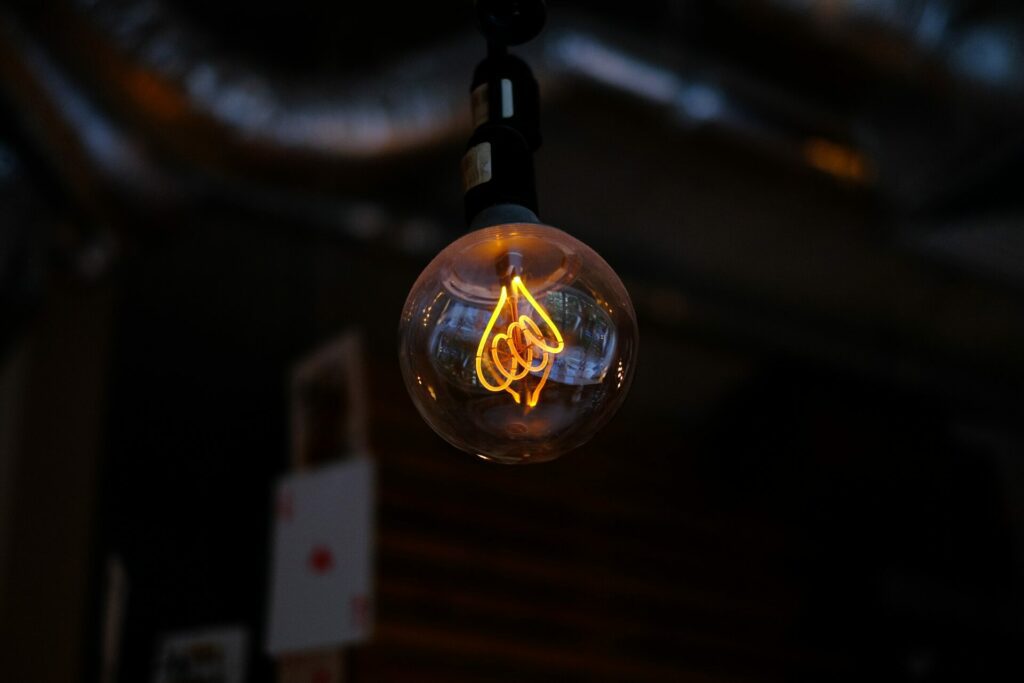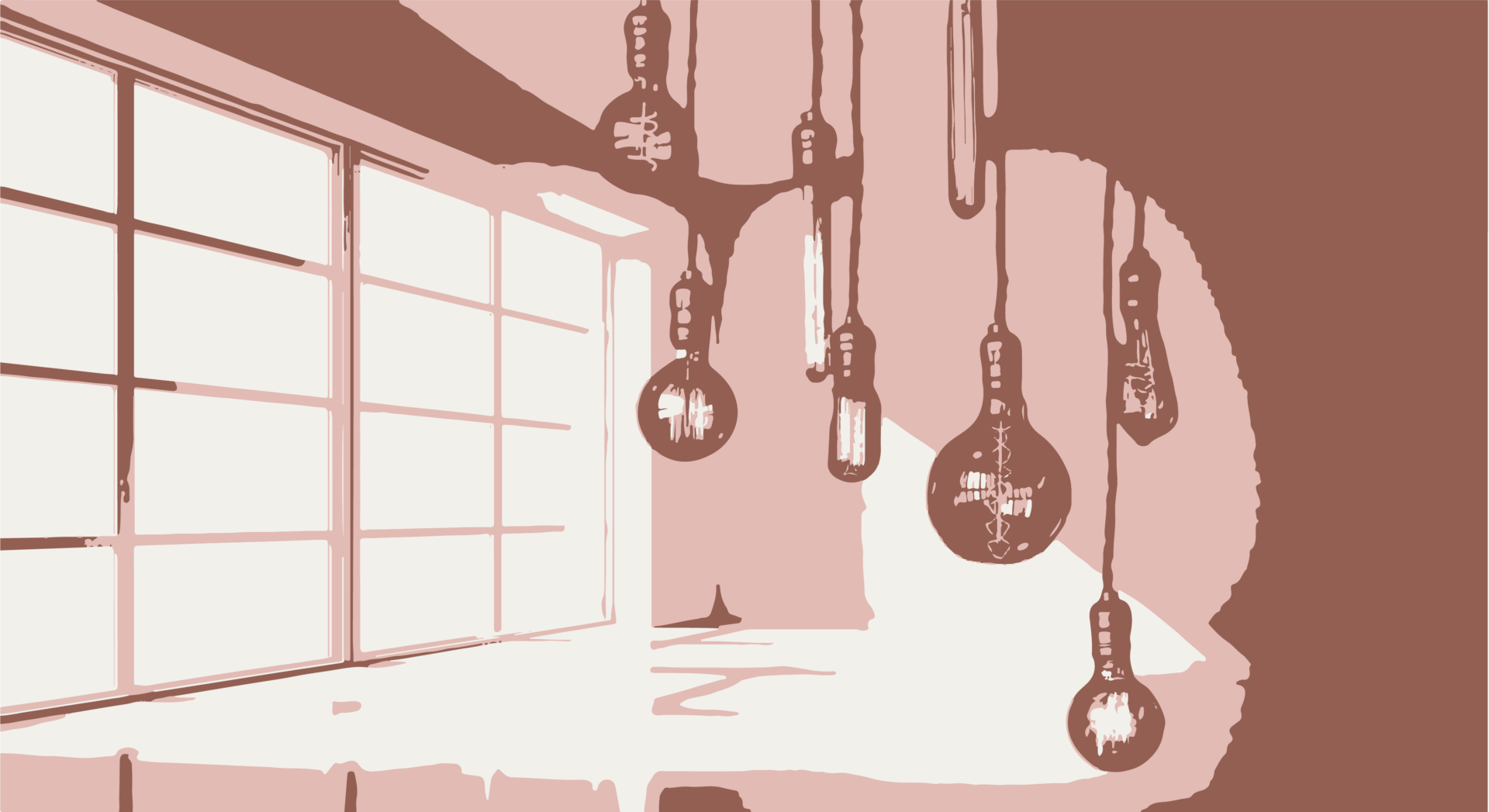Daylight is the most natural and healthiest forms of light, and has wide-ranging benefits so its important to maximise the amount of daylight coming into your home. Here are some simple tips to increase views to teh outdoors and bring more daylight into your home through interior design.

How do daylight and electric light impact health, wellness and performance in the home?
Not all light is created equal. One of the critical differences between daylight and electric light is the changing intensity, colour and direction through the day and night and across the seasons. These all impact the variation and perception of your interior spaces. More importantly, these variations profoundly impact health, well-being and productivity.
Most buildings and homes use a combination of natural daylight through windows, doors, skylights, and electric light sources. Understanding how these two light sources differ and the basics of lighting is essential to understand their relative impacts on human health and performance.
Natural daylight
Sunlight is electromagnetic radiation in the wavelength range that can be absorbed by the eye's photoreceptors, making it visible (400-700nm). Sunlight provides a balanced spectrum of colours, with elements in all parts of the visible wavelength range. The actual wavelengths present in daylight vary over the day with latitude, meteorological conditions, and seasons. It profoundly impacts human biology, controlling the body's circadian rhythm. Affecting mood and perception and enabling critical chemical reactions that influence and regulate physiological processes, such as digestion and sleep.
Blue wavelength light is highly energising and available in its most concentrated form early in the day. It's vital in maintaining circadian and seasonal signalling, meaning your body knows its day/night, summer/winter. However, too much blue light increases our cortisol, stress response and reactive oxygen species, which can lead to molecular damage in the body.
The clever thing is that in nature, we are never exposed to natural blue light in isolation without the healing effects of red light. Red and infrared wavelength light is a primer that improves and activates mitochondrial function (our body's energy cells). It builds antioxidants in the body that offsets the cortisol-inducing blue light. It also stimulates, heals, regenerates and protects injured or degenerating tissues, decreasing skin inflammation, repairing sun damage and building collagen.
Electric Light
The light from most electrical light sources is composed of light wavelengths concentrated in limited areas of the visible light spectrum. Hence, it lacks the natural and protective balance of light seen in daylight.
The harmful effects of junk blue light from electric light sources have been widely publicised. Blue light suppresses melatonin production, harms sleep quality, damages mitochondria and accelerates ageing and disease.
It can also damage the eyes' photoreceptors (melanopsin), which is linked to short-sightedness (myopia), age-related macular degeneration, obesity, Parkinson's disease and depression.
Light Quality
Getting enough daylight into a building's interior can be challenging, meaning alternative artificial light sources are somewhat unavoidable.
How do you judge a good electric light source from a bad one?
There are two quality markers for the use of artificial light.
1. Colour temperature

The relative colour of light. Not coloured light such as red or green; instead, a perceived shade of white light. Often supplied by lighting manufacturers, it's also known as the Correlated Colour Temperature (CCT) and is measured in degrees Kelvin (K). The lower the value, the warmer the light perceived; think of the orange/yellow glow of an incandescent (around 2300K). The higher the value, the cooler the light perceived, generally in the blue spectrum, such as a cool white fluorescent or LED (6000K.)
2. Light Flicker

Light flicker is the electric charge intensity of light output, generally caused by voltage fluctuation. This means the light source turns on and off around 60 times per second in the US / 50 times per second in the EU.
You may be familiar with visible flickering from faulty fluorescent lights and the negative impact this has on your comfort and productivity. With modern-day lighting, such as LEDs, this flicker generally goes unseen by the naked eye, switching on and off at a rate much higher than our eyes can register. However, on a cellular level, our bodies still perceive it. Flicker can cause many symptoms, from headaches, eyestrain and even muscular strain of the neck and shoulders.
There are various electric light sources, each with differing attributes, advantages and disadvantages. When it comes to the quality of the light and the impact it has on our health, these could be divided into two subsets; thermal and non-thermal.
Thermal lights
Thermal lights are illuminated using heat and are more akin to natural daylight as the spectrum of colour is relatively similar. They take time to warm up, with a gradual and full range of colours. Primarily giving off yellow, orange, red and infrared, they don't create severe peaks and troughs in brightness, which is much kinder on the eyes.
When it comes to flickering, these bulbs still turn on and off. However, the flicker rate is virtually non-detectable by the body because the bulb continues to glow longer than one 50/60th of a second, providing almost continuous illumination.
The most common thermal lights used in our homes nowadays are:
Incandescent Lamps

The incandescent lamp is a popular but less available light source. You'll be most familiar with these from 20 years ago, the type of bulb that produces light by the flow of current through a tungsten filament inside a sealed glass bulb. Their relatively short lifespan and lower electrical efficiency are why they were phased out as a primary light source in the EU in 2016 in favour of energy-saving bulbs. Whilst they were not made illegal, they were hard to get hold of for a time but are now readily available.
Mainly used for decorative purposes, they emit very little blue light, and what little is emitted is offset by the regenerating infrared light. They create a very comforting and warm amber glow which is more natural and soft on the eyes. Much like daylight!
Halogens

Halogens are an enhanced version of incandescent bulbs. Only worthy of a brief mention, they have mostly disappeared from interior use in favour of LEDs because of their higher running temperatures and higher energy usage. The UK government ended their sale at the end of October 2021 as part of a range of energy efficiency improvements that could help lower bills and save carbon.
Non-thermal lights
Non-thermal lights illuminate through other means than heat. They tend to be problematic for health and well-being.
The most commonly used in our homes nowadays are:
Fluorescent & fluorescent lamps (CFL)

These low-pressure discharge lamps, in which the ionisation of mercury vapour transforms UV light into visible light as it strikes the fluorescent coating on the inner surface of the bulb. They can produce the same amount of visible light whilst using one-fifth to one-third of the electric power, lasting eight to fifteen times longer. Designed originally to replace the incandescent light bulb.
These have fallen out of favour recently with the invention of LEDs, which compete with CFLs for high-efficiency lighting. CFLs also contain toxic mercury, which, aside from the potential health implications, also makes their disposal as hazardous waste complicated.
Light Emitting Diodes (LEDs)

An LED is a lamp with a semiconductor device that illuminates when an electrical current runs through it. They are popular due to their low energy consumption and the fact that they produce significantly less heat and require no warm-up period.
However, LEDs are digital devices that turn fully on and off. From a flicker detection standpoint, everything goes black for a fraction of 60 or 50 times a second, so on a biological level, this is more detectable than, say, an incandescent bulb which continues glowing through a fraction of a second.
Standard cool white LED lights give off primarily yellow, orange and red wavelengths, with a dramatic spike in the blue spectrum. Warm LED lights are similar, with less dramatic blue wavelength spikes, instead replaced with green light. Both green and blue light suppresses the sleep hormone melatonin. Not so great for the evening and your circadian health!
Daylight Simulating LEDs
The good news is that technology is continuously developing and improving. It is now possible to purchase full-spectrum LEDs that come close to resembling daylight. These used to be the mainstay of expensive circadian lighting systems that alter the light colour temperature and intensity based on a schedule in line with the time of the day. However, you can now purchase relatively inexpensive full spectrum LED bulbs with three variable colour temperature settings (1800k / 2200k / 4000k) that change with a click of the light switch.
Full spectrum bulbs should have a CRI (colour rendering index) of 95 or more. CRI indicates how close the colours in specific light sources represent an object's actual colour, with daylight at noon having a CRI of 100.
These energy-efficient bulbs also tend to have less flicker and low EMFs (electrical, magnetic frequency - Another health and well-being consideration I will save for another blog post!)
In Summary
Lighting can be a complicated subject to get your head around. However, it's essential to take the time and effort to choose lighting that supports your health and well-being in the home. If you get it right, the benefits are tangible. Helping improve mood, energy levels, productivity, sleep and general health.
- In simple terms, natural is always best! Maximise the daylight available in your home, lowering your dependence on electric lighting.
- Incandescent bulbs and full-spectrum LEDs are the healthiest forms of home electric lighting.
- If standard LEDs are unavoidable, use LEDs with a warm colour temperature of around 2700K or less, similar to the colour of incandescent bulbs.
- You can support your circadian rhythm and encourage sleep by using amber or red lights in the evening and at night.
I help home, and workspace renovators create interiors that better support sleep, fitness, healthy eating, comfort, productivity and focus whilst reducing toxic exposure and stress within the home. Follow me for more information, or reach out if you have any questions.
Any way you can improve your home to impact its sustainability and create a healthier environment is an excellent step toward future-proofing. Here are some targeted recommendations depending on your situation, where you will likely see the most bang for your buck regarding health and sustainability.
A sustainable and healthy home requires special consideration of each occupant's future changing needs. Strategic action at the start of a project to future-proof a home will provide the flexibility to adapt and respond to changing requirements so that your renovated home can work better and harder for your needs and improve your quality of life.
Spending time in nature is incredibly beneficial for our mental and physical health. It can speed up healing and recovery time, boost positive feelings and reduce negative ones. It makes sense to incorporate the natural world within our interiors as much as possible, and doubling down on these benefits of having plants within the home that also offer healthy food is a no-brainer!
Positive Psychology gets exciting and juicy when you apply the principles to interior design. It may not seem immediately apparent how or why this is relevant but dig a little deeper. You'll see how wellness interior design can better support the five PERMA model components and be used to create homes and workplaces that allow people to be physically and mentally healthy and provide opportunities to restore, uplift the spirit and make people happy.
I've been inspired by nature and the beauty of autumn this year, and I feel autumnal colours seem to be knocking at my door at every turn.
So it only felt right to put together an Autumnal lounge scheme inspired by the WGSN and Colouro Global Colour Forecast's key colour Intense Rust.
September 29, 2022 — No Comments
Health, wellness & well-being. What is the difference, and why should it matter to you?
The words health, wellness and wellbeing are used interchangably, and whilst i'm sure for many getting through life without knowing the difference is no biggy.
However words and how they are used are essential especially when working toward health, wellness and wellbeing goals. Clarity is everything!









